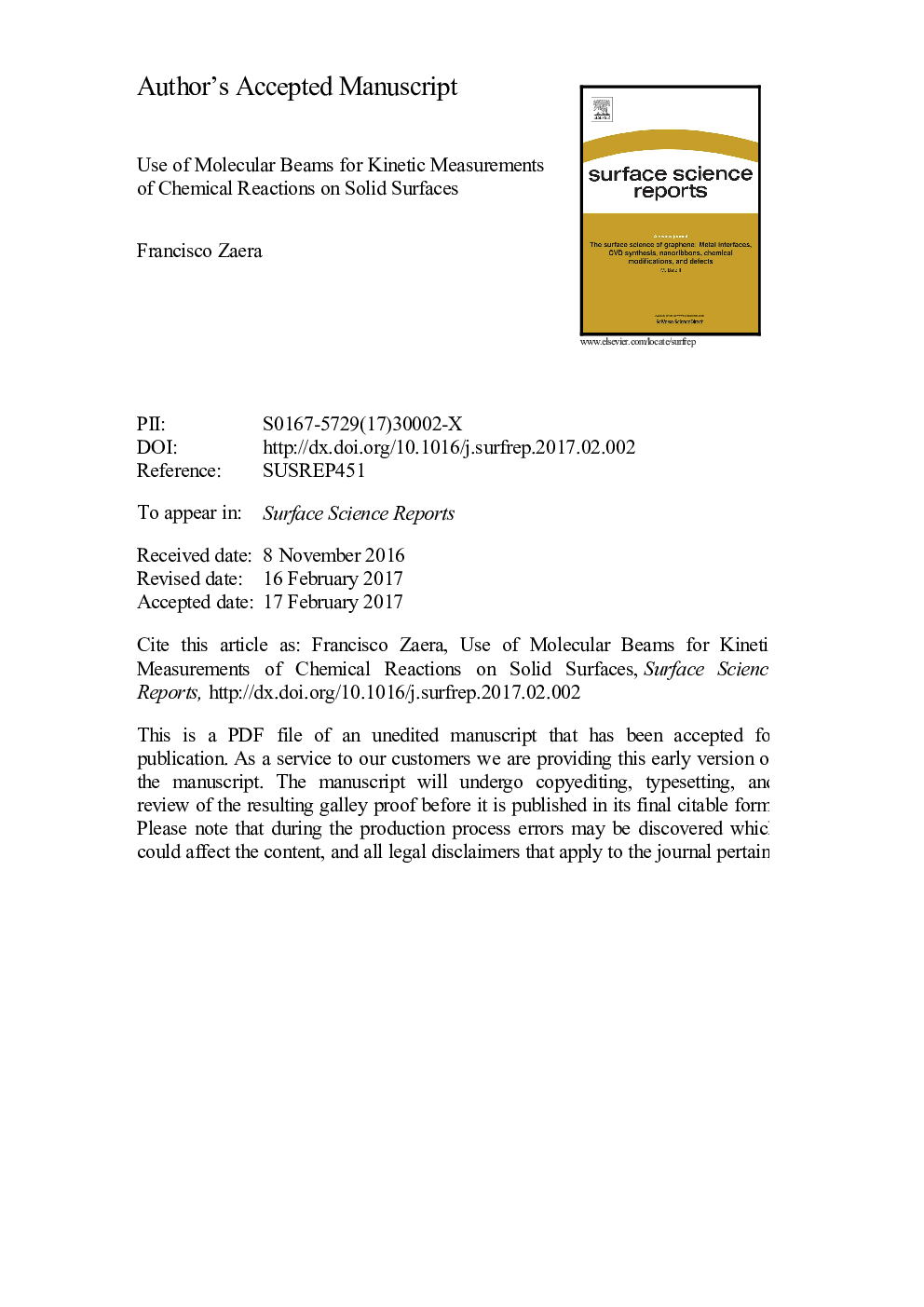| کد مقاله | کد نشریه | سال انتشار | مقاله انگلیسی | نسخه تمام متن |
|---|---|---|---|---|
| 7845013 | 1508416 | 2017 | 205 صفحه PDF | دانلود رایگان |
عنوان انگلیسی مقاله ISI
Use of molecular beams for kinetic measurements of chemical reactions on solid surfaces
ترجمه فارسی عنوان
استفاده از پرتوهای مولکولی برای اندازه گیری های جنبشی واکنش های شیمیایی در سطوح جامد
دانلود مقاله + سفارش ترجمه
دانلود مقاله ISI انگلیسی
رایگان برای ایرانیان
کلمات کلیدی
پرتوهای مولکولی، سینتیک، دینامیک، جذب، کاتالیزوری، اچینگ، اکسیداسیون سطحی، رسوب فیلم،
موضوعات مرتبط
مهندسی و علوم پایه
شیمی
شیمی تئوریک و عملی
چکیده انگلیسی
In this review we survey the contributions that molecular beam experiments have provided to our understanding of the dynamics and kinetics of chemical interactions of gas molecules with solid surfaces. First, we describe the experimental details of the different instrumental setups and approaches available for the study of these systems under the ultrahigh vacuum conditions and with the model planar surfaces often used in modern surface-science experiments. Next, a discussion is provided of the most important fundamental aspects of the dynamics of chemical adsorption that have been elucidated with the help of molecular beam experiments, which include the development of potential energy surfaces, the determination of the different channels for energy exchange between the incoming molecules and the surface, the identification of adsorption precursor states, the understanding of dissociative chemisorption, the determination of the contributions of corrugation, steps, and other structural details of the surface to the adsorption process, the effect to molecular steering, the identification of avenues for assisting adsorption, and the molecular details associated with the kinetics of the uptake of adsorbates as a function of coverage. We follow with a summary of the work directed at the determination of kinetic parameters and mechanistic details of surface reactions associated with catalysis, mostly those promoted by late transition metals. This discussion we initiate with an overview of what has been learned about simple bimolecular reactions such as the oxidation of CO and H2 with O2 and the reaction of CO with NO, and continue with the review of the studies of more complex systems such as the oxidation of alcohols, the conversion of organic acids, the hydrogenation and isomerization of olefins, and the oxidative activation of alkanes under conditions of short contact times. 6 Reactions on supported nanoparticles: Materials gap, 7 Low-probability reactions: Pressure gap of this review deal with the advances made in the use of molecular beams with more realistic models for catalysis, using surfaces comprised of metal nanoparticles dispersed on the oxide surfaces used as catalyst support and high-flux beams to approach the pressures used in catalysis. The next section deals with the study of systems associated with fields other than catalysis, mainly with the etching and oxidation of semiconductor surfaces and with the chemistry used to grow thin solid films by chemical means (chemical vapor deposition, CVD, or atomic layer deposition, ALD). We end with a personal assessment of the past accomplishments, present state, and future promise of the use of molecular beams for the study of the kinetics of surface reactions relevant to practical applications.
ناشر
Database: Elsevier - ScienceDirect (ساینس دایرکت)
Journal: Surface Science Reports - Volume 72, Issue 2, May 2017, Pages 59-104
Journal: Surface Science Reports - Volume 72, Issue 2, May 2017, Pages 59-104
نویسندگان
Francisco Zaera,
